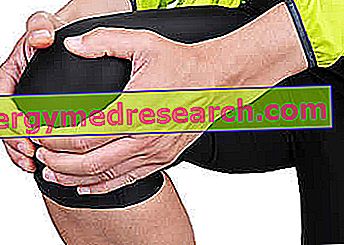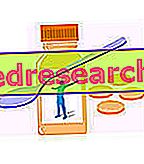Generality
The generic term "meniscopathies" is used to indicate the set of lesions that can affect the meniscuses.

The pathologies of the meniscus can arise in all types of patients, both male and female. However, indicatively, it is estimated that more than 50% of diagnosed meniscopaths are of interest to athletes.
Functions of the meniscuses
The menisci are "C" shaped fibrocartilaginous structures, located at knee level and placed between the tibia and the condyles of the femur. Within each knee we can distinguish a lateral meniscus and a medial meniscus.
The menisci perform numerous and fundamental functions in the musculoskeletal system. More specifically, the menisci:
- They protect the joint from damage due to hyperextension and hyperflexion;
- They help cartilage absorb shocks;
- They play a role of shock absorbers and distribute the loads applied to them uniformly;
- They stabilize the entire joint.
Causes and Types of Meniscopathies
As mentioned, the term meniscopatie is a generic term, with which we want to indicate a diverse range of injuries against the meniscuses. These injuries can basically be divided into two large groups, depending on the underlying cause of their development:
- Meniscopathies of traumatic origin: these meniscopathies are caused precisely by traumas and are more frequent in sportsmen and young patients. In this case, the lesions are caused by the excessive stress of the meniscuses, overcoming the maximum resistance of the meniscal tissue.
- Meniscopathies of degenerative origin : these meniscopathies, on the other hand, occur mainly in old age. In this case, the tissue that makes up the menisci undergoes a degeneration that progresses with the passage of time. Injuries of this type generally arise following the execution of apparently trivial movements.
Meniscopathies can occur in both menisci, but the medial meniscus is the most affected.
Diagnosis
Generally, the doctor and especially the orthopedist are able to identify the meniscopathies with a simple outpatient visit, through the interview with the patient and through the analysis of the symptoms presented by it.
However, to be sure of the diagnosis of meniscopathy, the doctor usually has to resort to performing instrumental investigations, such as MRI and CT.
Symptoms
The symptoms that characterize meniscopathies may be different depending on the cause.
Of course, the main symptom caused by meniscopathies is pain . However, this particular symptom may manifest itself in an unclear way, ie it may not appear immediately, but only after some time, especially when the meniscal lesions are mild. In other cases, however, the pain can appear or intensify only when certain movements are performed.
However, along with pain, another characteristic symptom of meniscopathies is swelling of the knee, which can be associated with other manifestations, such as stiffness, joint blockage, difficulty in flexing or extending the joint, crunching of the joint, loss of muscular strength and / or hypotrophy of the quadriceps.
Treatment
The treatment of meniscopathies may vary depending on the type of meniscal injury and its severity, but also on the patient's age.
Basically, two different therapeutic strategies can be undertaken: the conservative one and the surgical one. Conservative therapy can be effective in solving the problem only in the case of mild meniscopathies, while in more severe forms, surgery is often the only possible solution.
Conservative Therapy
The conservative therapy of meniscal lesions requires first of all the immobilization and rest of the affected limb. In association with rest, ice packs can be applied on the knee affected by the injury. By doing this, we try to reduce both the pain and the swelling characteristic of meniscopathies.
Furthermore, if the doctor considers it necessary, he may decide to prescribe the administration of non-steroidal anti-inflammatory drugs (or NSAIDs), such as ibuprofen. In fact, these drugs are very useful both for controlling the pain caused by the lesion and for reducing inflammation.
Surgical intervention
If conservative therapy is not sufficient, then the doctor may consider it necessary to resort to surgery. Currently, the entire meniscus is no longer being removed as it used to be done in the past, but, where possible, the damaged part is sutured.

If it is not possible to carry out a suturing of the compromised part, then only the portion of the meniscus that has been damaged can be removed.
In any case, we always try to avoid the complete removal of the meniscus . In fact, by completely removing the meniscus, patients are exposed to a high risk of developing arthrosis and degenerative diseases early.
Naturally, following surgery, the patient will have to undergo a specific rehabilitation, whose purpose is to regain mobility, joint flexibility and muscle tone of the limb affected by meniscopathy.
To conclude, it should be emphasized that surgical treatment is mainly carried out in cases of traumatic meniscopathies, since in treatment of degenerative meniscopathies such treatment may not produce the desired effects, indeed it may even be counterproductive.



